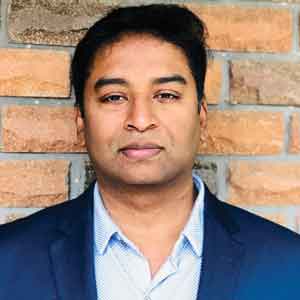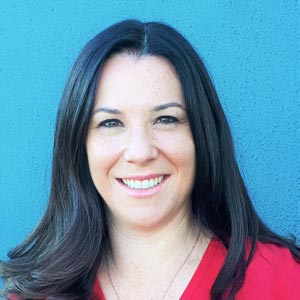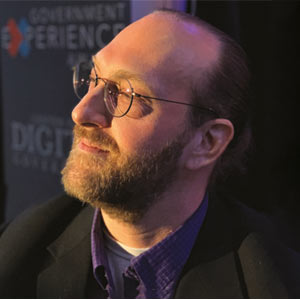THANK YOU FOR SUBSCRIBING

Dave Goff, Senior VP & CIO, ECMC Group
IT, as a business function, supports multiple business units, each with its own opportunities and challenges. Perhaps the greatest challenge, though, is establishing IT as a strong partner that delivers the greatest outcomes and benefits, while at the same time being connected to, valued by and appreciated by business partners and the entire organization.
One way to address this challenge is to create a partnership between individual functions and the IT team by developing ongoing dialogue to build rapport and trust. Start by identifying the key people within each business unit who can affect positive change. Personal experience has shown that it’s not always the highest-ranking person in the business, but often the one or two people within a team who can link strategy, prioritization, resource allocation, timing, and decision making. Working in conjunction with IT, that individual should understand and be able to clearly articulate what success looks like for his/her group.
A Shared Definition of Success
Business units are accustomed to driving toward specific objectives or outcomes—typically metrics that focus on customer outcomes and satisfaction. IT organizations place a great deal of pride on using attainable schedules and budgets to contribute to the business objectives. High-performing IT organizations aspire to make a meaningful difference and see a direct correlation between their efforts and the company’s success.
“It is important to be open-minded, listen to feedback, and continually refine the approach on IT projects to remain aligned to desired outcomes”
Once the business unit and IT teams agree on what success looks like and have earned each other’s trust, the next step is to continue the open dialogue and discuss how to improve the organization’s prioritization and execution of technology projects.
Admittedly, this is easier said than done—leaders change, businesses evolve, market conditions shift and priorities compete with each other. Within this ever-changing landscape, a healthy dose of empathy, listening, transparency, and sincerity can help ensure that these ongoing discussions shape the right decisions and expectations. It is also important to be open-minded, listen to feedback, and continually refine the approach on IT projects to remain aligned to desired outcomes.
Using “Interlock” Meetings to Align Business and IT
Once this foundation is established, a 13-week recurring quarterly calendar should be developed that includes meetings with each function twice per quarter.
It is important to be open-minded, listen to feedback, and continually refine the approach on it projects to remain aligned to desired outcomes
Each functional interlock meeting should start with a display of the previously agreed upon priorities and a discussion of the progress that’s been made on IT projects since the last interlock meeting. These meetings allow the IT organization to take pride in demonstrating its abilities to meet commitments and show results, and also enable business partners to better understand and appreciate how the IT team is helping them meet their business goals and deadlines. The 12-month rolling roadmaps should be organized into logical swim lanes around specific imperatives or by department; these are helpful to determine a thoughtful and well-synchronized set of projects. And, when projects invariably hit speed bumps, earlier interlock meetings and the related efforts to build trust and transparency will be useful in gaining mutual understanding and resetting expectations.
Next on the interlock meeting agenda should be new initiatives or project requests. The discussion should focus on how these new initiatives affect the existing top priorities and the 12-month rolling roadmap to understand cause-and-effect on the current IT project portfolio and resources.
Establishing a regular cadence to these discussions between IT and the business units is key. Since project teams are probably meeting more frequently, the functional interlock meetings should be strategic and focused on larger objectives and outcomes. The functional and IT teams will benefit by demonstrating consistent and material progress on the initiatives that matter most. By adjusting and updating the priorities, roadmaps, and expectations on a regular and predictable basis, the IT team will be viewed as responsive, agile, and trusted to deliver and quickly focus on the most pressing matters.
A Holistic, Organization-wide View that Delivers Great Outcomes
If your IT operation supports multiple business units, the functional priorities and 12-month rolling roadmaps should be used to create a composite view of the enterprise’s priorities and roadmaps. In the fourth and tenth week of each quarter, a business alignment team should be responsible for verifying the composite priorities and ensuring that initiatives and projects across the enterprise are well coordinated and synchronized. These composite views increase the awareness and appreciation of your team’s efforts and contributions, and also ensure that executive leadership has an organization-wide view into the enterprise technology priorities and timelines.
During the 13-week recurring calendar quarter, IT is consistently meeting with each functional team and the IT business alignment team is meeting twice per quarter. Each discussion and update provides an opportunity to report progress, adjust priorities and roadmaps, and align on go-forward priorities. With this process, high-performing IT teams can see how their work is aligned to the company’s strategic imperatives, and how they are contributing to the company’s success, and the business teams will embrace and respect an IT team that is listening to their needs and consistently helping them to meet their objectives. Maintaining ongoing conversations and shared focus enables teams to achieve amazing results and deliver the greatest outcomes together.
Weekly Brief
I agree We use cookies on this website to enhance your user experience. By clicking any link on this page you are giving your consent for us to set cookies. More info
Read Also
Artificial Intelligence - Myths And Truths
Sustainable Future through Innovative Technology Solutions
The Future Relies on Augmented AI
Digitalization with the use of digital technologies/Improving business through digital technologies
How Marco's Pizza Leaned On Technology To Succeed Amid The Pandemic By Quickly Pivoting To Contact-Free Delivery And Curbside Carryout
Bunnings Diy Digital Transformation
For a Smarter City: Trust the Data, Ignore the Hype
Smart Community Innovation for the Post Pandemic





















